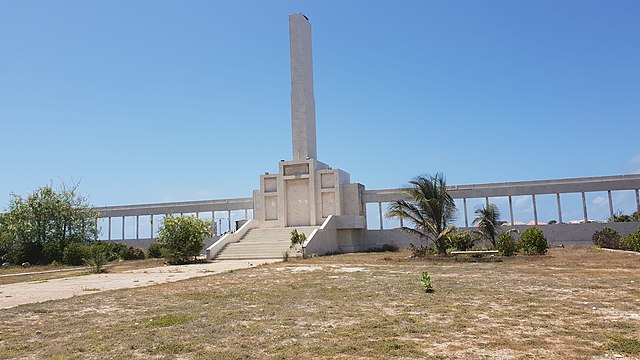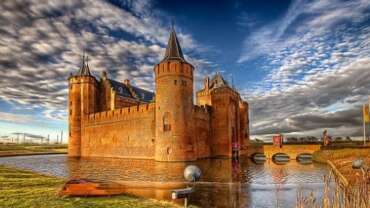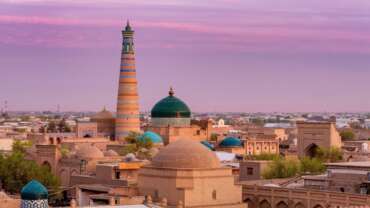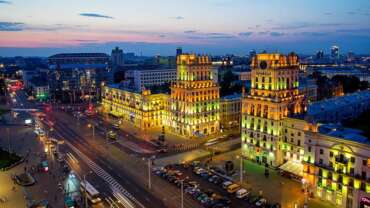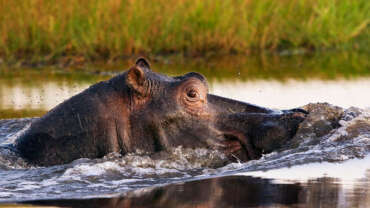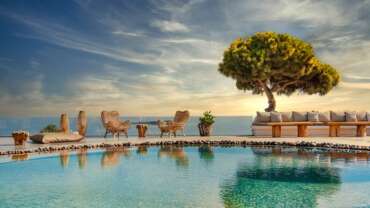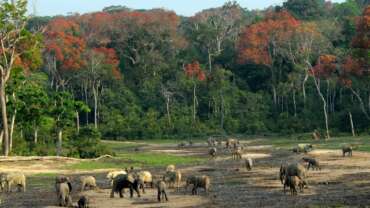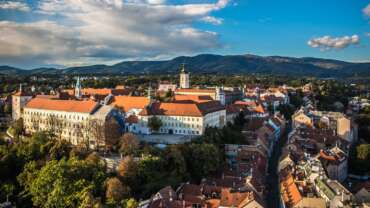Welcome to Somalia!
Somalia, officially the Federal Republic of Somalia is a sovereign country in the Horn of Africa. It is bordered by Ethiopia to the west, Djibouti to the northwest, the Gulf of Aden to the north, the Indian Ocean to the east, and Kenya to the southwest. Somalia has the longest coastline on Africa’s mainland.
History of Somalia
Exploration
Early activity on the coasts
From their connection with the Ethiopian hinterland, their proximity to Arabia, and their export of precious gums, ostrich feathers, ghee (clarified butter), and other animal products as well as slaves from farther inland, the northern and eastern Somali coasts have for centuries been open to the outside world. This area probably formed part of Punt, “the land of aromatics and incense,” mentioned in ancient Egyptian writings. Between the 7th and the 10th century, immigrant Muslim Arabs and Persians developed a series of trading posts along the Gulf of Aden and Indian Ocean coasts. Many of the early Arab geographers mentioned these trading posts and the sultanates that grew out of them, but they rarely described the interior of the country in detail.
Intensive exploration really began only after the occupation of Aden by the British in 1839 and the ensuing scramble for Somali possessions by Britain, France, and Italy (see below The imperial partition). In 1854, while Richard Burton was exploring the country to the northwest in the course of his famous journey from Berbera to Hārer, his colleague John Hanning Speke was making his way along the Makhir coast in the northeast. This region had previously been visited by Charles Guillain, captain of the brig Ducouedid, between 1846 and 1848. Guillain also sailed down the Indian Ocean coast and went ashore at Mogadishu, Marca, and Baraawe, penetrating some distance inland and collecting valuable geographic and ethnographic information. In 1865 the German explorer Karl Klaus von der Decken sailed up the Jubba River as far as Baardheere in the small steamship Welf, which foundered in rapids above the town. Decken was killed by Somalis, but much valuable information collected by his expedition survived.
Penetration of the interior
In 1883 a party of Englishmen (F.L. and W.D. James, G.P.V. Aylmer, and E. Lort-Phillips) penetrated from Berbera as far as the Shabeelle River, and between 1886 and 1892 H.G.C. and E.J.E. Swayne surveyed the country between the coast and the Shabeelle and also reached farther east toward the Nugaaleed valley. During 1894–95 A. Donaldson-Smith explored the headwaters of the Shabeelle in Ethiopia, reached Lake Rudolf, and eventually descended the Tana River to the Kenyan coast. In 1891 the Italian Luigi Robecchi-Bricchetti trekked from Mogadishu to Hobyo and then crossed the Ogaden region to Berbera. About the same time, further explorations were made by another Italian, Capt. Vittorio Bottego. In the 20th century several extensive surveys were made, especially in the British protectorate, by J.A. Hunt between 1944 and 1950, and much of the country was mapped by aerial survey.
Before partition
Peoples of the coasts and hinterland
Until recent times the history of the Horn of Africa was dominated by two great themes: the southward expansion of the Somali from the Gulf of Aden littoral and the development by Arab and Persian Muslim settlers of a ring of coastal trading towns dating from at least the 10th century CE. By this time, Islam was firmly established in the northern ports of Seylac (Zeila) and Berbera and at Marca, Baraawe, and Mogadishu on the Indian Ocean coast in the south. These centres were engaged in a lively trade, with connections as far as China. Initially the trend of expansion was from these coastal centres inland, especially in the north.
Probably by the 10th century the country from the Gulf of Aden coast inland had been occupied first by Somali nomads and then, to their south and west, by various groups of pastoral Oromo who apparently had expanded from their traditional homelands in southwestern Ethiopia. To the south of these Cushitic-speaking Somali and Oromo—the “Berberi” of classical times and of the Arab geographers—the fertile lands between the Shabeelle and Jubba rivers were occupied, partly at least, by sedentary Bantu tribes of the Nyika confederacy, whose ancient capital was Shungwaya. Remnants of the Zanj, as these people were known to the Arab geographers, still survive in this region, but their strongest contemporary representatives are found among the coastal Bantu, of whom the Pokomo live along the Tana River in northern Kenya. Another smaller allied population consisted of the ancestors of the scattered bands of hunters of northern Kenya and southern Somalia known as the Wa-Ribi, or the Wa-Boni, a people whose appearance and mode of existence recall those of the San of other areas of Africa.
The great Somali migrations
With this distribution of peoples in the 10th century, the stage was set for the great movements of expansion of the Somali toward the south and of the Oromo to the south and west. The first known major impetus to Somali migration was that of Sheikh Ismāʿīl Jabartī, ancestor of the Daarood Somali, who apparently traveled from Arabia to settle in the northeastern corner of the Somali peninsula in the 11th century. This was followed, perhaps two centuries later, by the settlement of Sheikh Isaq, founder of the Isaaq Somali. As the Daarood and Isaaq clans grew in numbers and territory in the northeast, they began to vie with their Oromo neighbours, thus creating a general thrust toward the southwest. By the 16th century the movements that followed seem to have established much of the present distribution of Somali clans in northern Somalia. Other Somali pressed farther south, and some, according to the Arab geographer Ibn Saʿīd, had already reached the region of Marca by as early as the 13th century.
In the meantime, farther to the west a ring of militant Muslim sultanates had grown up around the Christian kingdom of Ethiopia, and the two sides were engaged in a protracted struggle for supremacy. Somali clansmen regularly formed part of the Muslim armies: the name Somali first occurs in an Ethiopian song of victory early in the 15th century. In the 16th century the Muslim state of Adal, whose port was Seylac, assumed the lead in the holy wars against the Christian Amhara. The turning point in the struggle between Christians and Muslims was reached with the Ethiopian victory in 1542, with Portuguese support, over the remarkable Muslim leader Aḥmad ibn Ibrāhīm al-Ghāzī (known to the Ethiopians as Aḥmad GrāŃ). With his Somali armies, Aḥmad had harried Ethiopia almost to the point of collapse. This victory, which saved Ethiopia, also closed the door to Somali expansion westward and increased the pressure of the Somali and Oromo thrust southward. With this stimulus the main mass of the Oromo swept into Ethiopia from the south and southwest and streamed in conquering hordes as far north as the ancient city of Hārer.
This massive invasion left something of a political vacuum in the south of the Horn, which new Somali settlers were quick to fill. By the 17th century the influx of new migrants, competing and jostling with each other, had become considerable. The old Ajuran Somali sultanate, linked with the port of Mogadishu, was overthrown, and Mogadishu itself was invaded and split into two rival quarters. Some of the earlier Somali groups found refuge in northern Kenya. The continuing Somali thrust south—largely at the expense of Oromo and Zanj predecessors—was ultimately effectively halted at the Tana River only by the establishment of administrative posts in about 1912.
People of Somalia
Ethnic groups
In culture, language, and way of life, the people of Somalia, northeastern Kenya, the Ogaden region of Ethiopia, and the southern part of Djibouti are largely one homogeneous group.
The Somali people make up the overwhelming majority of Somalia’s population. They are divided into numerous clans, which are groups that trace their common ancestry back to a single father. These clans, which in turn are subdivided into numerous subclans, combine at a higher level to form clan families. The clan families inhabiting the interfluvial area of southern Somalia are the Rahanwayn and the Digil, which together are known as the Sab. Mainly farmers and agropastoralists, the Sab include both original inhabitants and numerous Somali groups that have immigrated into this climatically favourable area.
Other clan families are the Daarood of northeastern Somalia, the Ogaden, and the border region between Somalia and Kenya; the Hawiye, chiefly inhabiting the area on both sides of the middle Shabeelle and south-central Somalia; and the Isaaq, who live in the central and western parts of northern Somalia. In addition, there are the Dir, living in the northwestern corner of the country but also dispersed throughout southern Somalia, and the Tunni, occupying the stretch of coast between Marca and Kismaayo. Toward the Kenyan border the narrow coastal strip and offshore islands are inhabited by the Bagiunis, a Swahili fishing people.
One economically significant minority is the several tens of thousands of Arabs, mainly of Yemenite origin. Another economically important minority is the Bantu population, which is mainly responsible for the profitable irrigation agriculture practiced on the lower and middle reaches of the Jubba and Shabeelle rivers. Many Bantu are the descendants of former slaves, and socially they are regarded as inferior by other groups in Somalia. The result is a strict social distinction between the “noble” Somali of nomadic descent and the Bantu groups. There is also a small Italian population in Somalia.
Languages
The Somali language belongs to the Cushitic branch of the Afro-Asiatic language family. Despite several regional dialects, it is understood throughout the country and is an official language. The second official language is Arabic, which is spoken chiefly in northern Somalia and in the coastal towns. Owing to Somalia’s colonial past, many people have a good command of English and Italian, which, in addition to Somali, are used at the country’s colleges and universities. Swahili also is spoken in the south. In 1973 Somalia adopted an official orthography based on the Latin alphabet. Until then, Somali had been an unwritten language.
Religion
Virtually all Somali belong to the Shāfiʿī rite of the Sunni sect of Islam. Various Muslim orders (ṭarīqa) are important, especially the Qādirīyah, the Aḥmadīyah, and the Ṣaliḥiyah.
Art & Culture of Somalia
The arts
There are many famous Somali artists, poets, musicians, actors, and dancers, some of whom live in exile. Nuruddin Farah, whose novels are written in English, has achieved international fame. (For Farah’s thoughts about his country at the turn of the new millennium, see Sidebar: Somalia at the Turn of the 21st Century.) Cultural institutions in Mogadishu are the National Museum, the Historical Museum, and the National Theatre.
Cultural Life
Cultural milieu
Somalia has a rich oral tradition: in effect, every Somali is a walking repository of the country’s stories, myths, traditions, and genealogies. Although Islam is the predominant religion, indigenous beliefs remain strong and are often syncretized with those of the Qurʾān to provide a belief system unique to the country. Somali mythology dates to pre-Islamic times and includes belief in jinn, supernatural spirits, and ghouls (ghūls), treacherous shape-changing spirits, who are said to inhabit significant features of the landscape, including wells, crossroads, and burial grounds. Also extremely important is astrology, which is thought to provide divinations of the days ahead; some Somalis believe that the appearance of certain stars, constellations, and eclipses can presage everything from the coming of rain to a massacre.
Daily life and social customs
The varied cultural life of the Somali includes both traditional activities and, especially in the towns, many modern interests. Cultural activities consist primarily of poetry, folk dancing, the performance of plays, and singing. These traditional activities still retain their importance, especially in rural areas, and are practiced not only at family and religious celebrations but also at state ceremonies. On such occasions traditional local costume is generally worn. Especially in the towns, traditional culture is rapidly being superseded by imported modern influences, such as television, cinema, and bars and restaurants. Urban Somalian cooking has been strongly influenced by Italian cuisine, and young townspeople are much influenced by Western fashion in the way they dress. Football (soccer) is a popular sport.
Mogadishu City “The White Pearl Of Indian Ocean”
Visit Mogadishu is the licensed official site for Mogadishu City Guide that provides Mogadishu Tourism. The agency provides complete tourist service including the visa process, the airport pick up, security guard, accommodation, and a tour to ten top Mogadishu attractions.
Mogadishu- the Capital of Somalia
Mogadishu, localy also known as Xamar, is the largest city in Somalia and the nation’s capital. The city is located on the coast of Indian Ocean – the coast of the Horn of Africa, in the Banaadir regional administration in southeastern Somalia. Mogadishu (مقديشو), the largest city in Somalia and the nation’s capital As of 2014, the capital city of Somalia has a population of 2,853,000 residents.
Hot Destinations
Somalia has the biggest coastline in Africa with 3300km seashore along the Indian Ocean. This long strip of stunning beaches can be the home to loveliest destinations for tourism. Thousands of people already come to Mogadishu’s popular beaches such as Lido Beach or Jazeera beach to relax and sunbathe by the Indian Ocean.
The City’s Main Features
Features of Mogadishu city include various sites, from the beautiful Hamarwein old town, the buzzing Bakaara Market where you can find anything from spices to building materials, to spectacular Lido Beach, Jazeera Beach. From the intriguing site for Black Hawk Down, to lush green Afgooye Orange Farms and Peace Gardens with its sports fields, kids playground and green areas.
The sandy beaches of Mogadishu’s Lido beach have vibrant coral reefs and are primarily real estate for the first tourist resorts in many years.



